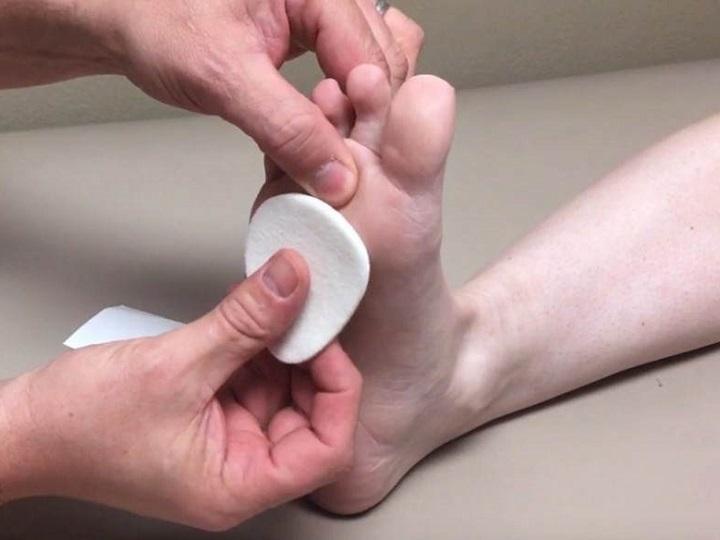Sometimes I think I should have been a foot doctor – the technical term for this is podiatrist. But then I remember that I failed 12th grade biology because I could not remember all the jargon. In hindsight, it was fortunate I did not become one. But still, I have done immense research on everything foot-related and can impart my knowledge to everyone.
Do Metatarsal Pads Help Morton’s Neuroma?
If I were to sum it up in a few words, metatarsal foot pads help alleviate the discomfort that Morton’s Neuroma causes. The pressure caused by metatarsal nerves is shifted away, and the pads provide a cushioning affect. Due to the lessened pressure, swelling might also reduce.
Read on to know how these pads work, how to use them properly, and the mistakes to watch out for while using them.
Do Metatarsal Pads Work?
Let me first give an overview of what Morton’s Neuroma actually is. Again, I am no medical professional, but I will try to explain this to the best of my ability.
First, let me tell you some of the symptoms a person might experience; it might feel like you are constantly stepping on a rock which is inside your shoe, you cannot feel anything in your toes, or pain might radiate in the ball region of your toes.
This region is generally below your third and fourth toes. This condition can occur because of wearing heels that are very high, an injury that occurred while playing sports, or because of a defect such as a very high arch, already present in your feet. Because of these, nerves in the foot get irritated.
Now, onto the remedy. Metatarsal Pads are meant to placed at the ball of your foot because of their size. If you compare them with regular insoles, these are as inconspicuous as possible. They do not alter the way your foot is positioned or control its movement, rather just make sure that your body weight is spread consistently.
These pads also help in realigning toes separated from each other and allows blood vessels some extra space to operate more openly.
In the case of Morton’s Neuroma, some of the foot’s nerves get inflamed. This in turn makes your toes go upward to deal with the pain. These pads are made so that your toes can come back down, which in turn will relieve stress on your already inflamed nerves. Once a normal position is assumed, and the pad is acting a shock absorber while walking, proper healing can begin.
Where Do You Put the Metatarsal Pad for Morton’s Neuroma?
The important point to note here is that you will not place the pad directly on the ball of your foot. That will only make your condition worse. As mentioned before, you need to feel the ball area in between your third and fourth toes. You will place the pad directly below the ball of your fit.
The first step you need to take is removing the insole present inside your shoes. This will make it easier to place the pad, rather than estimating the area by reaching in. Once you have removed the insert, you need to locate the area where it would match beneath the ball of your foot. You can place your foot next to it to get an accurate measurement.
Now you might think this is it and you can glue the pad on the insert. Hold your horses, friends. For now, peel back only a quarter of the adhesive for the testing phase. Place this on your estimate area, only sticking the peeled off part. Put the insole back inside your shoe and test whether the pad is placed in the accurate are and is providing support.
Take the insole back out and make the necessary adjustments to get the pad in the perfect position. Now is the time, folks. You can remove the rest of the adhesive and securely stick the pad onto the insole. Put it back inside your shoe. Repeat the process for your other pair. There you have it, ball support while moving around.
Top 3 Reasons the Metatarsal Pads Are Not Helping with Morton’s Neuroma
You have gotten your condition diagnosed. The doctor has given preventive measures that will aid in healing as well. But what ends up happening is, you do not use the pads in an appropriate manner.
Firstly, you were told to stop wearing tight shoes, and avoid wearing heels at all costs. Suddenly, a flurry of activity flares up at work, and heels have always been your go-to for formal occasions. You think, I can put these pads inside my heels, and that way it will not hurt.
Not only will this put extra pressure on the balls of your feet, which the pads can only counteract so much, the constriction of your toes will also aggravate your condition. In conclusion, lay off the heels, and place these pads inside flat, roomy shoes.
Secondly, you might think that increasing your exercising regimen will help reduce the pain of the neuroma. In addition to the exercise, you think to place a Metatarsal Pad inside your joggers to reduce the pressure. The equation in your head is: less pressure, plus stretching of muscles, equals a completely healed foot.
This equation could not be more wrong. Even if you do want to exercise, you need to take the load off your feet. Try cycling, or similar exercises that do not require foot strength. Either that, or completely give your feet some rest, to allow them to recover.
Thirdly, you might think these pads are not necessary to wear everyday. If you remember to stick them inside your shoe, that is fine, and if you do not, your feet will survive. That is a very wrong way of recovery. By not wearing these pads consistently, you keep exacerbating your condition.
Your feet are not being given the proper time and care for healing. You cannot be on your feet all day long, and not have some support down there. Wear these in all shoes.

